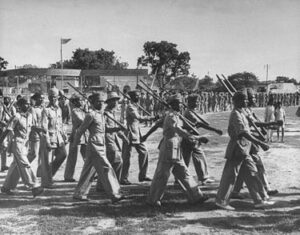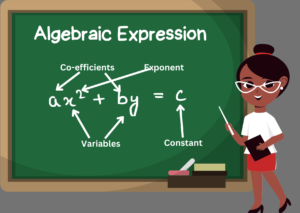Introduction
After the downfall of the Mughal empire, many Mughal provinces became an independent kingdom. These independent nations were known as successor states. These successor nations included Bengal, Hyderabad, and Awadh.
Rise of Autonomous States
As regional kingdoms became aware of the Mughal emperors’ frailty, they started to declare their independence and challenge their power. The states of Awadh, Bengal, Hyderabad, Mysore, Jat, and the Sikh state were among these autonomous states.
- Bengal: Murshid Quli Khan established this state in 1717 after moving his capital from Decca to Murshidabad. His son Shujauddin took over as his successor. Alivardi Khan (who prevented the French East India Company from abusing its privileges), Siraj-ud-daulah (who fought in the renowned Battle of Plassey in 1757), Mir Jafar, and Mir Qasim were a few of the state’s other notable rulers.
- Awadh: In 1722, Sadat Khan established the state of Awadh, which is now known as Uttar Pradesh. He participated in the plot against the Sayyid brothers, which led to more manuals being handed to him. He was afterwards forced to enter a new principality of Awadh after being expelled from the court.
-
- Hyderabad: Qilich Khan, who was bestowed the title of Nizam-ul-Mulk by the Mughal emperor Farruksiyar, formed the independent kingdom of Hyderabad. The selection of Mubriz Khan as the viceroy of Deccan did not sit well with him. Thus, in the battle of Shkr-Kheda, Qilich Khan engaged him in combat and ultimately killed him.
- Mysore: Mysore was a significant state that proclaimed its independence. It was allotted at the intersection of the eastern and western ghats while the Wodeyars were in power. This region was under the scrutiny of numerous powers and became a perpetual battleground as a result. In the end, Haider Ali was in charge of it, and he had to deal with a lot of consequences for this.
-
- The Jat state: The agriculturalist Jat settlers of Delhi, Mathura, and Agra began to rebel against the Mughal rule because of Aurangzeb’s repressive policies. Finally, Bharatpur, the Jat state, was founded by Churaman and Badan Singh.
- The Sikh state: To defend their faith, Guru Gobind Singh turned the Sikhs into a militant group. During the Nadir Shan and Ahmed Shah Abdali invasion, the Sikhs consolidated their power.
The Nizam’s Army
Asaf-Jah sometimes referred to as Nizam-ul-Mulk, founded the state of Hyderabad. He was thus the state’s first ruler (Nizam). He possessed sizable and powerful armed forces that were further split into two groups: regular forces and irregular forces. Imperial Service Troops, Golconda Brigade, and Myseram Regiment were all part of the structured, modern regular army. The irregular one included individuals from many regions or ethnic groups, including Afghans, Sikhs, Jats, Turks, Rohillas, etc.
The Private Military, which was Organized by Nizam
A private military is primarily a type of armed force that is more loyal to an individual or group of individuals than it is to a country or state. During the British Raj in India, a leader of the Muslim nationalist group MIM (Majlis-e-Ittehadul Muslimeen) by the name of Bhadur Yar Jung established the private armed force known as Razakars in Hyderabad. During the rule of Nizam Osman Ali (the final Nizam), it was effectively organized and made more turbulent by Qasim Razvi. Because they killed so many people, these Razakars were seen as being extremely ruthless and ferocious.

Duties and Responsibilities
Hyderabad was offered the option of joining either India or Pakistan in 1947, during the period of independence. Osman Ali Asaf Jah, the last Nizam of this state, rejected the notion and opted to keep it as a separate princely state. Qasim Razvi sent out the Razakars to guard the survival of Hyderabad’s princely state and to oppose the state’s incorporation into the Dominion of India. As a result of this military force’s extreme brutality, many people were slain in the Telangana and Marathawada regions. They even killed individuals they suspected of being opposed to the concept of princely states. Five days of the fighting occurred between Indian soldiers and the Razakars.
In the end, the Indian army routed the Razakar, and Razvi was detained until being permitted to leave for Pakistan. Meanwhile, Hyderabad was included in the Indian empire through Operation Polo
Summary
Numerous local kingdoms rose to power and proclaimed their independence from the Mughal empire by taking advantage of the Mughal emperors’ weaknesses. These nations began preserving their armed forces and collaborating against the Mughals. These independent nations saw the emergence of Hyderabad, Bengal, Punjab, Mysore, and other regions as well. Few of these princely nations even resisted joining India even after the British left office because their monarchs desired to keep their full independence. Hyderabad was one of these states, and it had its private army, the Razakars.
Frequently Asked Questions (FAQs)
1.Why was Hyderabad known as the city of Nizams?
Ans. Because Qilich Khan of the Asaf Jahi dynasty, who was given the title of Nizam, founded Hyderabad, it became known as the city of Nizam. Following him, the same dynasty’s six additional Nizams ruled Hyderabad.
2.What was the Tripartite Treaty?
Ans. Ranjit Singh signed the tripartite agreement with Shah Shuja, the English firm, and themselves, agreeing to let the British forces travel through Punjab in exchange for their approval to install Shah Shuja as the ruler of Kabul.
3. What was Operation Polo?
Ans. The police action of the newly independent India against Hyderabad in 1948 was known as “Operation Polo.” Sardar Vallabhbhai Patel, the Indian Home Minister, gave the order for Indian troops to attack and annex the princely state of Hyderabad.
4. Why is the Battle of Plassey Important in Indian History?
Ans. Siraj-ud-daulah and the East India Company engaged in combat at the Battle of Plassey in 1757. Because it cemented the British military dominance in Bengal and laid the groundwork for the British Empire in India, this conflict had a significant impact on Indian history.
5. Mention the Reforms made by Tipu Sultan.
- Economic reforms: establishing trade relations by sending ambassadors abroad.
- Revenue reforms: it included the elimination of the jagir system, a reduction in the hereditary ownership of poligars, and initiatives to elevate the status of the peasantry.
- Military reforms: it included the organization of the army along European lines and the construction of two dockyards for modern navy ships.
